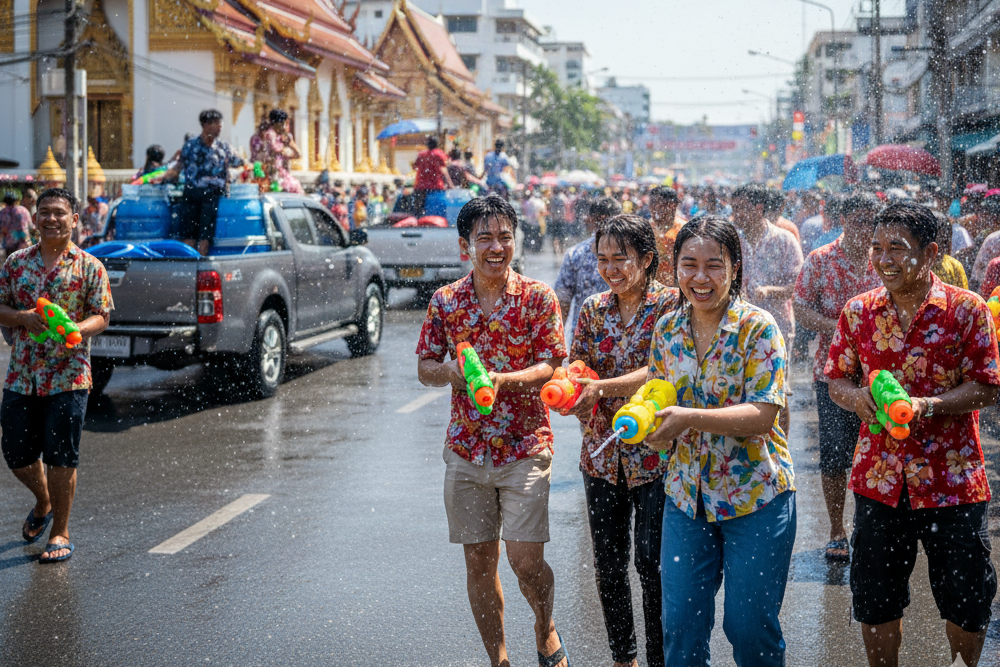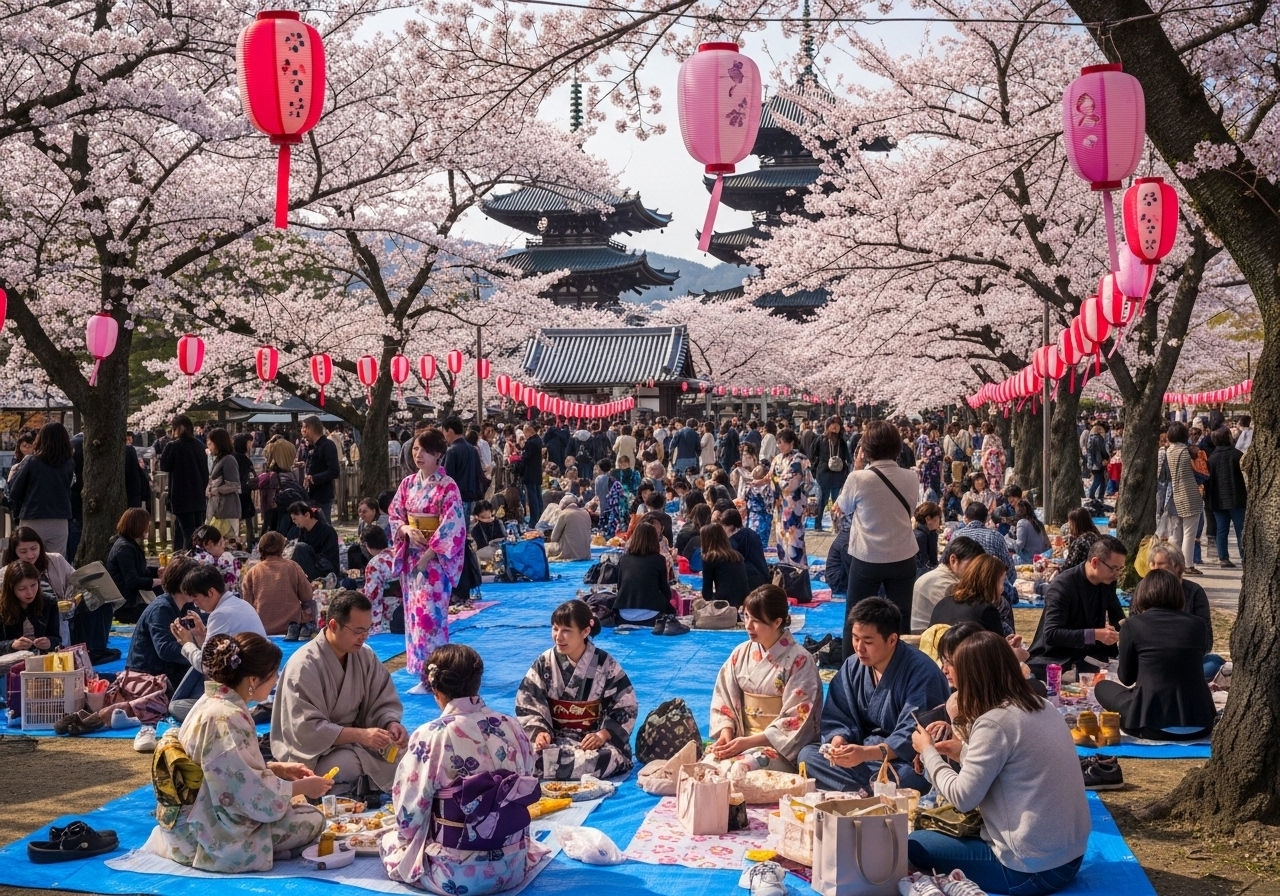Spring Festivals You Can't Miss in 2026: A Global Guide
Cameron Lane
2025-10-11
6 min read

Spring marks a time of renewal across cultures worldwide, and nowhere is this celebration of life more vibrant than at the season's most spectacular festivals. As winter gives way to warmer days and blooming landscapes, communities around the globe gather to honor ancient traditions, welcome new beginnings, and celebrate the return of life to the natural world. From color-drenched celebrations in India to cherry blossom festivals in Japan, 2026 promises an extraordinary lineup of spring festivals that offer travelers and culture enthusiasts unforgettable experiences.
Holi Festival - India (March 13-14, 2026)
Known as the Festival of Colors, Holi transforms India into a kaleidoscope of joy and vibrant hues. This ancient Hindu celebration marks the arrival of spring and the triumph of good over evil, with roots dating back over 1,500 years to Sanskrit texts and Puranic literature. The festival begins with Holika Dahan on the evening of March 13, where communities light bonfires to symbolically burn away negativity and evil spirits. The main celebration on March 14 sees millions of people taking to the streets, dousing each other with colored powders called gulal and throwing water balloons filled with bright dyes. Each color carries symbolic meaning: red represents love and fertility, yellow signifies turmeric and prosperity, blue honors Krishna, and green celebrates new beginnings and harvest. Beyond the colorful chaos, Holi serves as a great social equalizer where traditional barriers of caste, age, and social status dissolve in the spirit of celebration. The festival's significance extends beyond religious boundaries, with major celebrations occurring in cities like Delhi, Mumbai, and Vrindavan. International visitors flock to experience this unique cultural phenomenon, making Holi one of India's most photographed and socially shared festivals worldwide.
Cherry Blossom Festival - Japan (Late March to Early May 2026)
Japan's cherry blossom season, known as sakura, represents one of the world's most beloved spring celebrations. While not a single festival but rather a national obsession, the blooming of cherry trees across Japan creates a series of interconnected celebrations that capture the essence of mono no aware, the Japanese concept of the bittersweet beauty of impermanence. The Japan Meteorological Agency issues official cherry blossom forecasts, and the blooming period varies by region, starting in southern Okinawa in January and reaching northern Hokkaido by late April or early May. Tokyo's peak bloom typically occurs around late March to early April, while Kyoto follows closely behind. These predictions generate nationwide excitement as millions of Japanese people participate in hanami, the traditional practice of viewing and celebrating the blossoms. During hanami, families and friends gather in parks and gardens for elaborate picnics beneath the flowering trees. Popular locations include Tokyo's Ueno Park, which hosts over 10 million visitors during cherry blossom season, and Kyoto's Philosopher's Path, where thousands of cherry trees create tunnel-like canopies over walking paths. The brief blooming period, lasting only one to two weeks in each location, reinforces the Japanese appreciation for fleeting beauty and the importance of living in the moment.
Songkran Water Festival - Thailand (April 13-15, 2026)
Thailand's Songkran festival represents the traditional Thai New Year and one of the world's largest water fights. Originally a solemn Buddhist ceremony involving the gentle pouring of water over Buddha statues and the hands of elders as a sign of respect, Songkran has evolved into a three-day nationwide celebration where streets become battlegrounds for friendly water warfare. The festival's religious roots remain strong, with temple visits, merit-making activities, and family gatherings forming the spiritual foundation of the celebration. However, the playful water throwing, which began as a way to wash away bad luck and sins from the previous year, now dominates the festival experience. Major cities like Bangkok, Chiang Mai, and Pattaya transform into aquatic playgrounds where locals and tourists alike armed with water guns, buckets, and hoses engage in spirited battles. Songkran generates significant economic impact for Thailand, with the Tourism Authority estimating that the festival attracts over 500,000 international visitors annually, contributing billions of baht to the national economy. The celebration also showcases Thai hospitality and community spirit, as strangers become instant friends through shared laughter and soaking wet embraces.

Nowruz - Iran and Central Asia (March 20, 2026)
Nowruz, meaning "new day" in Persian, marks the Persian New Year and the arrival of spring at the moment of the vernal equinox. This ancient festival, with origins tracing back over 3,000 years to Zoroastrian traditions, is celebrated by more than 300 million people across Iran, Afghanistan, Tajikistan, Kurdistan, and Persian-speaking communities worldwide. The celebration extends far beyond a single day, incorporating weeks of preparation and 13 days of festivities. Families engage in extensive spring cleaning called "khaneh tekani" and prepare the Haft-Sin table, an elaborate display of seven items beginning with the Persian letter "sin," each symbolizing different aspects of life and renewal. These items include sabzeh (sprouted grass representing rebirth), samanu (wheat pudding symbolizing abundance), and senjed (dried lotus fruit representing love). Nowruz emphasizes themes of renewal, hope, and the triumph of light over darkness. The festival culminates with Sizdeh Bedar on the 13th day, when families venture outdoors for elaborate picnics to "lie on the thirteenth," avoiding the traditionally unlucky number by spending the day in nature's embrace.
National Cherry Blossom Festival - Washington, D.C. (March 20 - April 13, 2026)
Washington D.C.'s National Cherry Blossom Festival celebrates the gift of 3,000 cherry trees from Tokyo to the American capital in 1912, symbolizing the friendship between Japan and the United States. This month-long celebration transforms the nation's capital into a pink and white wonderland, attracting over 1.5 million visitors annually to witness the stunning blooms around the Tidal Basin. The festival features a diverse program of cultural performances, art exhibitions, and educational events that honor both American and Japanese traditions. The famous Blossom Kite Festival, Petalpalooza concert, and the parade showcase the festival's evolution from a simple tree-viewing event into a comprehensive cultural celebration that bridges two nations through natural beauty and shared appreciation for spring's renewal. These spring festivals represent more than mere celebrations; they embody humanity's universal desire to mark the passage of seasons, honor cultural heritage, and come together in joy and renewal. Whether you're drawn to the colorful chaos of Holi, the serene beauty of cherry blossoms, or the refreshing spirit of Songkran, 2026 offers countless opportunities to experience the magic of spring through the lens of diverse cultural traditions.



